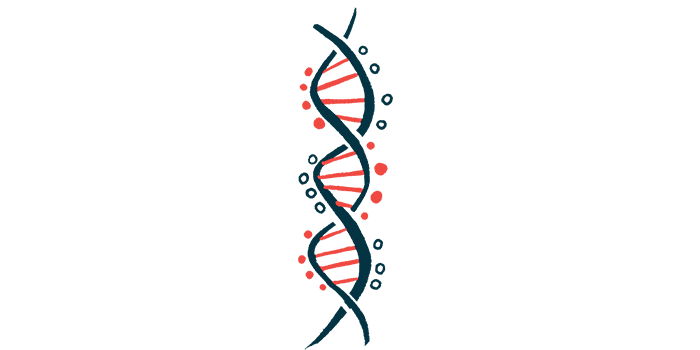Study identifies new mutations with potential link to Ehlers-Danlos
Researchers found a few genes that showed trends toward an EDS association

Through a genetic analysis of more than 170 patients, researchers have identified new genetic mutations that may cause Ehlers-Danlos syndrome (EDS).
“Our results are consistent with the complex genetic architecture of EDS and suggest a number of novel … candidate genes and pathways,” the researchers wrote in the study, “Genetic complexity of diagnostically unresolved Ehlers-Danlos syndrome,” which was published in the Journal of Medical Genetics.
EDS is a connective tissue disorder typified by symptoms such as abnormally mobile joints and fragile skin. EDS is caused by genetic mutations, and many specific mutations have been shown to cause various types of EDS. However, for many people with hypermobile EDS (hEDS), the most common type, specific disease-causing mutations have not been identified.
Most patients had symptoms that indicated hEDS
Here, researchers conducted genetic analyses on 174 people who had been diagnosed with EDS, but who hadn’t had a disease-causing mutation identified. Most of the patients had symptoms indicative of hEDS, but there also were patients with symptoms suggestive of many other types of EDS.
The patients underwent whole-exome sequencing (WES), which is a type of genetic testing that determines the sequence of only the parts of genes that provide instructions for making proteins.
From the results, 10 patients were found to have mutations that previously have been shown to be definite or likely causes of EDS. For example, two patients with symptoms resembling myopathic EDS were found to have definitively disease-causing mutations in COL12A1, the gene that’s known to cause this form of EDS. Another two patients had mutations in COL5A1, known to cause classical EDS.
The researchers noted that, at the time of recruitment, some genetic panel tests for EDS were available, but available tests didn’t include multiple EDS-associated genes yet.
“This study suggests that large panel-based sequencing and WES will have clinical utility in patients with complex presentations that are unresolved by clinical examination and EDS panel gene sequencing, by making new molecular diagnoses … that had not been previously suspected in earlier detailed investigation,” they wrote.
In addition to the handful of definitively disease-causing mutations, the researchers also identified many mutations that were classified as variants of uncertain significance (VUS). This means it’s theoretically plausible the mutations might cause EDS, but there isn’t enough data to say definitively.
Some of the VUS were identified in known EDS-causing genes. For example, some patients with symptoms of classical EDS had mutations in a region of the COL5A1 gene called exon 64. Prior studies have shown that classic EDS can be caused by mutations where a chunk of the COL5A1 gene that includes exon 64 is missing, but it remains unclear whether less dramatic mutations in this region also can cause disease.
VUS in genes not linked to EDS
There also were VUS in genes that haven’t been linked with EDS specifically, but with other connective tissue disorders. For example, a patient with hEDS had a VUS in the gene BGN, and mutations that completely disrupt the function of this gene can cause a disorder called Meester-Loeys syndrome. There also were patients with VUS in genes related to heritable thoracic aortic disease and Loeys-Dietz syndrome.
“These findings reflect the overlap between the clinical features of EDS [and other genetic connective tissue] disorders associated with EDS symptomatology,” the researchers wrote, adding that “a small number of patients were identified as carrying more than one such variant, suggestive of two separate … disorders, which may explain the complex phenotypes [clinical presentations] observed in these patients.”
In addition to looking for variants in genes known to be associated with connective tissue diseases, the researchers also conducted analyses where they compared genetic variants in 128 of the EDS patients against variants found in 248 people without the condition.
While results didn’t show statistically significant associations, there were a few genes that showed trends toward an association with EDS, including LOC283685 and GOLGA6L2. The scientists proposed these might be useful targets for further studies into the genetic underpinnings of EDS.
“While a formal burden analysis did not identify any genome-wide statistically significant associations, several plausible candidate [gene spots] were identified that will benefit from further investigation,” the scientists wrote.







